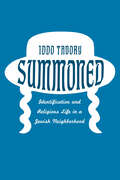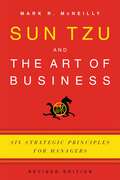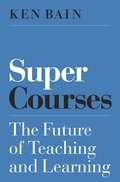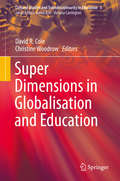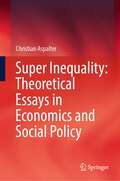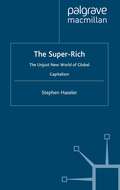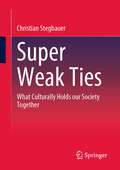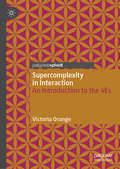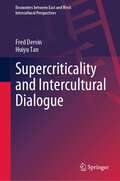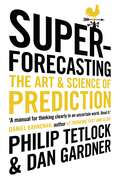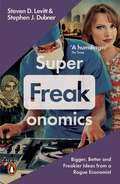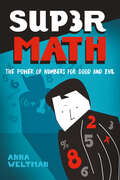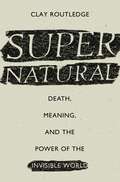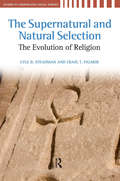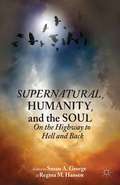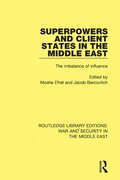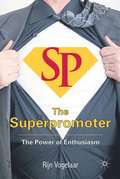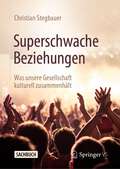- Table View
- List View
Summoned: Identification and Religious Life in a Jewish Neighborhood
by Iddo TavoryOn a typical weekday, men of the Beverly-La Brea Orthodox community wake up early, beginning their day with Talmud reading and prayer at 5:45am, before joining Los Angeles’ traffic. Those who work “Jewish jobs”—teachers, kosher supervisors, or rabbis—will stay enmeshed in the Orthodox world throughout the workday. But even for the majority of men who spend their days in the world of gentiles, religious life constantly reasserts itself. Neighborhood fixtures like Jewish schools and synagogues are always after more involvement; evening classes and prayers pull them in; the streets themselves seem to remind them of who they are. And so the week goes, culminating as the sabbatical observances on Friday afternoon stretch into Saturday evening. Life in this community, as Iddo Tavory describes it, is palpably thick with the twin pulls of observance and sociality. In Summoned, Tavory takes readers to the heart of the exhilarating—at times exhausting—life of the Beverly-La Brea Orthodox community. Just blocks from West Hollywood’s nightlife, the Orthodox community thrives next to the impure sights, sounds, and smells they encounter every day. But to sustain this life, as Tavory shows, is not simply a moral decision they make. To be Orthodox is to be constantly called into being. People are reminded of who they are as they are called upon by organizations, prayer quorums, the nods of strangers, whiffs of unkosher food floating through the street, or the rarer Anti-Semitic remarks. Again and again, they find themselves summoned both into social life and into their identity as Orthodox Jews. At the close of Tavory’s fascinating ethnography, we come away with a better understanding of the dynamics of social worlds, identity, interaction and self—not only in Beverly-La Brea, but in society at large.
Summoned: Identification and Religious Life in a Jewish Neighborhood
by Iddo TavoryOn a typical weekday, men of the Beverly-La Brea Orthodox community wake up early, beginning their day with Talmud reading and prayer at 5:45am, before joining Los Angeles’ traffic. Those who work “Jewish jobs”—teachers, kosher supervisors, or rabbis—will stay enmeshed in the Orthodox world throughout the workday. But even for the majority of men who spend their days in the world of gentiles, religious life constantly reasserts itself. Neighborhood fixtures like Jewish schools and synagogues are always after more involvement; evening classes and prayers pull them in; the streets themselves seem to remind them of who they are. And so the week goes, culminating as the sabbatical observances on Friday afternoon stretch into Saturday evening. Life in this community, as Iddo Tavory describes it, is palpably thick with the twin pulls of observance and sociality. In Summoned, Tavory takes readers to the heart of the exhilarating—at times exhausting—life of the Beverly-La Brea Orthodox community. Just blocks from West Hollywood’s nightlife, the Orthodox community thrives next to the impure sights, sounds, and smells they encounter every day. But to sustain this life, as Tavory shows, is not simply a moral decision they make. To be Orthodox is to be constantly called into being. People are reminded of who they are as they are called upon by organizations, prayer quorums, the nods of strangers, whiffs of unkosher food floating through the street, or the rarer Anti-Semitic remarks. Again and again, they find themselves summoned both into social life and into their identity as Orthodox Jews. At the close of Tavory’s fascinating ethnography, we come away with a better understanding of the dynamics of social worlds, identity, interaction and self—not only in Beverly-La Brea, but in society at large.
Summoned: Identification and Religious Life in a Jewish Neighborhood
by Iddo TavoryOn a typical weekday, men of the Beverly-La Brea Orthodox community wake up early, beginning their day with Talmud reading and prayer at 5:45am, before joining Los Angeles’ traffic. Those who work “Jewish jobs”—teachers, kosher supervisors, or rabbis—will stay enmeshed in the Orthodox world throughout the workday. But even for the majority of men who spend their days in the world of gentiles, religious life constantly reasserts itself. Neighborhood fixtures like Jewish schools and synagogues are always after more involvement; evening classes and prayers pull them in; the streets themselves seem to remind them of who they are. And so the week goes, culminating as the sabbatical observances on Friday afternoon stretch into Saturday evening. Life in this community, as Iddo Tavory describes it, is palpably thick with the twin pulls of observance and sociality. In Summoned, Tavory takes readers to the heart of the exhilarating—at times exhausting—life of the Beverly-La Brea Orthodox community. Just blocks from West Hollywood’s nightlife, the Orthodox community thrives next to the impure sights, sounds, and smells they encounter every day. But to sustain this life, as Tavory shows, is not simply a moral decision they make. To be Orthodox is to be constantly called into being. People are reminded of who they are as they are called upon by organizations, prayer quorums, the nods of strangers, whiffs of unkosher food floating through the street, or the rarer Anti-Semitic remarks. Again and again, they find themselves summoned both into social life and into their identity as Orthodox Jews. At the close of Tavory’s fascinating ethnography, we come away with a better understanding of the dynamics of social worlds, identity, interaction and self—not only in Beverly-La Brea, but in society at large.
Summoned: Identification and Religious Life in a Jewish Neighborhood
by Iddo TavoryOn a typical weekday, men of the Beverly-La Brea Orthodox community wake up early, beginning their day with Talmud reading and prayer at 5:45am, before joining Los Angeles’ traffic. Those who work “Jewish jobs”—teachers, kosher supervisors, or rabbis—will stay enmeshed in the Orthodox world throughout the workday. But even for the majority of men who spend their days in the world of gentiles, religious life constantly reasserts itself. Neighborhood fixtures like Jewish schools and synagogues are always after more involvement; evening classes and prayers pull them in; the streets themselves seem to remind them of who they are. And so the week goes, culminating as the sabbatical observances on Friday afternoon stretch into Saturday evening. Life in this community, as Iddo Tavory describes it, is palpably thick with the twin pulls of observance and sociality. In Summoned, Tavory takes readers to the heart of the exhilarating—at times exhausting—life of the Beverly-La Brea Orthodox community. Just blocks from West Hollywood’s nightlife, the Orthodox community thrives next to the impure sights, sounds, and smells they encounter every day. But to sustain this life, as Tavory shows, is not simply a moral decision they make. To be Orthodox is to be constantly called into being. People are reminded of who they are as they are called upon by organizations, prayer quorums, the nods of strangers, whiffs of unkosher food floating through the street, or the rarer Anti-Semitic remarks. Again and again, they find themselves summoned both into social life and into their identity as Orthodox Jews. At the close of Tavory’s fascinating ethnography, we come away with a better understanding of the dynamics of social worlds, identity, interaction and self—not only in Beverly-La Brea, but in society at large.
Sun Tzu and the Art of Business: Six Strategic Principles for Managers
by Mark R. McNeillyMore than two millennia ago the famous Chinese general Sun Tzu wrote the classic work on military strategy, The Art of War. Now, in a new edition of Sun Tzu and the Art of Business, Mark McNeilly shows how Sun Tzu's strategic principles can be applied to twenty-first century business. Here are two books in one: McNeilly's synthesis of Sun Tzu's ideas into six strategic principles for the business executive, plus the text of Samuel B. Griffith's popular translation of The Art of War. McNeilly explains how to gain market share without inciting competitive retaliation, how to attack competitors' weak points, and how to maximize market information for competitive advantage. He demonstrates the value of speed and preparation in throwing the competition off-balance, employing strategy to beat the competition, and the need for character in leaders. Lastly, McNeilly presents a practical method to put Sun Tzu's principles into practice. By using modern examples throughout the book from Google, Zappos, Amazon, Dyson, Aflac, Singapore Airlines, Best Buy, the NFL, Tata Motors, Starbucks, and many others, he illustrates how, by following the wisdom of history's most respected strategist, executives can avoid the pitfalls of management fads and achieve lasting competitive advantage.
Sun Tzu and the Art of Business: Six Strategic Principles for Managers
by Mark R. McNeillyMore than two millennia ago the famous Chinese general Sun Tzu wrote the classic work on military strategy, The Art of War. Now, in a new edition of Sun Tzu and the Art of Business, Mark McNeilly shows how Sun Tzu's strategic principles can be applied to twenty-first century business. Here are two books in one: McNeilly's synthesis of Sun Tzu's ideas into six strategic principles for the business executive, plus the text of Samuel B. Griffith's popular translation of The Art of War. McNeilly explains how to gain market share without inciting competitive retaliation, how to attack competitors' weak points, and how to maximize market information for competitive advantage. He demonstrates the value of speed and preparation in throwing the competition off-balance, employing strategy to beat the competition, and the need for character in leaders. Lastly, McNeilly presents a practical method to put Sun Tzu's principles into practice. By using modern examples throughout the book from Google, Zappos, Amazon, Dyson, Aflac, Singapore Airlines, Best Buy, the NFL, Tata Motors, Starbucks, and many others, he illustrates how, by following the wisdom of history's most respected strategist, executives can avoid the pitfalls of management fads and achieve lasting competitive advantage.
Super Courses: The Future of Teaching and Learning (Skills for Scholars)
by Ken BainFrom the bestselling author of What the Best College Teachers Do, the story of a new breed of amazingly innovative courses that inspire students and improve learningDecades of research have produced profound insights into how student learning and motivation can be unleashed—and it’s not through technology or even the best of lectures. In Super Courses, education expert and bestselling author Ken Bain tells the fascinating story of enterprising college, graduate school, and high school teachers who are using evidence-based approaches to spark deeper levels of learning, critical thinking, and creativity—whether teaching online, in class, or in the field.Visiting schools across the United States as well as in China and Singapore, Bain, working with his longtime collaborator, Marsha Marshall Bain, uncovers super courses throughout the humanities and sciences. At the University of Virginia, undergrads contemplate the big questions that drove Tolstoy—by working with juveniles at a maximum-security correctional facility. Harvard physics students learn about the universe not through lectures but from their peers in a class where even reading is a social event. And students at a Dallas high school use dance to develop growth mindsets—and many of them go on to top colleges, including Juilliard. Bain defines these as super courses because they all use powerful researched-based elements to build a “natural critical learning environment” that fosters intrinsic motivation, self-directed learning, and self-reflective reasoning. Complete with sample syllabi, the book shows teachers how they can build their own super courses.The story of a hugely important breakthrough in education, Super Courses reveals how these classes can help students reach their full potential, equip them to lead happy and productive lives, and meet the world’s complex challenges.
Super Dimensions in Globalisation and Education (Cultural Studies and Transdisciplinarity in Education #5)
by David R. Cole Christine WoodrowThis volume is the first major production of the globalisation research strand of the Centre for Educational Research at Western Sydney University. This book makes a significant contribution to the theory of and research in globalisation and education, and tackles the topics of superdiversity and supercomplexity. The book’s thesis is that the effects of globalisation on education can only be understood if the specific yet complex conditions of globalisation in education are investigated. The book takes an international approach to understanding globalisation and does not restrict itself to just one methodological or theoretical plane of investigation.Education is one of these frontline domains in which the effects of superdiversity cannot be dismissed, minimized or denied. The continuously increasing complexity of learning environments is raising critical issues at every level, from description over analysis to theoretical generalization, and this book is a first and fruitful attempt at charting these waters. This pioneering book will remain a key text for many years to come.Jan BloomaertProfessor of Language, Culture and Globalization and Director of the Babylon CenterTilburg University, the Netherlands. This provocative collection works from two premises: that today there is superdiversity in our globalised world and related is a supercomplexity of theoretical and methodological approaches. The collection proffers multifarious challenges for educational theory, research and practice in working with, through and across these two premises. As such, Super Dimensions in Globalisation and Education is essential reading for all educational researchers, whatever their interests or location.Professor Bob LingardThe University of Queensland, Australia. This is a highly imaginative book that stops ‘flat earth’ and convergence arguments dead in their tracks. Its genius is to bring super-complexity and super-diversity into a conversation with each other and with education, and in doing so shed light on the numerous and unexpected ways in which global processes are shaping education in revealing and compelling ways. Any scholar concerned with globalisation and education will find Super Dimensions in Globalisation and Education a’ must have’ on their reading list. Professor Susan RobertsonDirector of the Centre for Globalisation, Education and Social FuturesUniversity of Bristol, UK. This is an absorbing and compelling collection. It takes readers on a kaleidoscopic journey through various intricate expressions of the nexus between globalisation and education. And it offers multiple ways that such expressions can be thought and rethought. In transcending conventional categorisations it invites educators to do so too. Professor Jane Kenway, Australian Professorial Fellow – Australian Research Council, Education Faculty, Monash University, Australia.
Super Inequality: Theoretical Essays in Economics and Social Policy
by Christian AspalterThis book bridges the disciplines of micro-economics and social policy in general, and, in particular, behavioral/explanatory social policy and public choice theory, plus Leibenstein’s X-efficiency theory. Being trained as an economist and social policy scientist, the author leaps out of the comfort zone of most social policy scientists and experts, right into the exciting world of micro-economic theory, and then extending and connecting those theories to explain major social, political and economic conundrums of our time. In doing so, the book offers a new set of theoretical—and practical—explanations derived from the general proposition of micro-economic theory, of how government officers, policymakers, administrators and the people themselves alike are, by and large, motivated in their daily as well as strategic (long-term) decision-making. Using a meta-analytical approach (based on a number of grand theories), this book also explains systemic factors behind human behavior and the thereof resulting shortcomings in lifetime outcomes (health, wealth and happiness of a person) and at the same time societal, policy-making, and economic outcomes on societal level, and in global comparison.The outcomes thereof can be measured exactly (and hence validated), especially through the method of empirical comparative social science/economic research. Here, the author also (but not only) introduces the new method of using Aspalter's Standardized Relative Performance (SRP) Index in measuring exactly complex, aggregate performances of multiple governments, and that at the same time also across the entire world.
The Super-Rich: The Unjust New World of Global Capitalism
by S. HaselerIn The Super-Rich , Stephen Haseler describes the dangerous growing tensions caused throughout the West by the triumphant new global capitalism. In a book for students of politics, economics and sociology, and the general reader, he outlines how a new global super-rich caste has emerged during a period in which the traditional 'middle-class' is facing serious insecurity and income loss. He argues that this new super-rich capitalism, if not balanced by a renewal of the state and community, will not only destroy politics and governance, but democracy as well, and he shows exactly how the European Union, and other embryonic 'regional' super-states, can combat these excesses of globalization, and restore a more 'social democratic' society.
Super Weak Ties: What Culturally Holds our Society Together
by Christian StegbauerIn this book, it is explained how we learn from each other and how people adapt their behavior to one another. We orient ourselves to others by observing how they behave in specific situations. The analysis of relationships is actually the domain of network research, which has traditionally focused on strong and weak ties. However, this book explores super weak ties, which are often not consciously perceived, as their significance unfolds behind the backs of us all. Although one can hardly speak of relationships in the traditional sense, these super weak ties are often just as influential as stronger ones. The orienting effect is particularly pronounced when there are similarities in interests and situations between observers and those being observed. Without transmissions facilitated by super weak ties, it would be challenging to arrive at cultural commonalities in society.
Supercomplexity in Interaction: An Introduction to the 4Es
by Victoria OrangeThis book aims to explore the supercomplexity of interaction and to suggest ways of teaching about this supercomplexity in various settings, including intercultural communication and language-learning. Using complex systems theory, the author argues that interaction is actually a supercomplex adaptive system which interconnects a number of different complex systems (the 4Es: Expression, Encounter, Education, Emotion) to give it meaning. She then draws on the concept of heartfulness to promote different ways of understanding and teaching the supercomplexity of interaction. This book will be of interest to language educators and students, as well as scholars of intercultural communication.
Supercriticality and Intercultural Dialogue (Encounters between East and West)
by Fred Dervin Huiyu TanThis book offers a snapshot of interculturality as a complex, unstable and highly political object of research and education when it locates at the centre of multifaceted dialogues between teachers and students; students and students; teachers, students, scholars and readers. The context of the book is a Chinese course on intercultural communication education where students engage with local and international teachers. By listening to the intriguing and stimulating voices of these students in dialogue with the teachers, the reader also has the opportunity to enter the intercultural world of Chinese youth, beyond stereotypes. The unique approach proposed in the book is of interest to students, teachers of intercultural communication education, teacher educators, researchers and anyone wishing to build up supercriticality in relation to the fascinating notion of interculturality. The book contains 15 chapters and revolves around five main dialogues between the students and their teachers. Following each dialogue, the floor is given to the students to react to the dialogues and to share their views on questions that emerged from the main dialogues. The book conveys the authors’ excitement about approaching interculturality in supercritical ways, engaging in the process with multiple voices.
Superforecasting: The Art and Science of Prediction
by Dan Gardner Philip TetlockNEW YORK TIMES BESTSELLERWINNER OF THE CMI MANAGEMENT FUTURES BOOK OF THE YEAR AWARD'A manual for thinking clearly in an uncertain world. Read it.' Daniel KahnemanWhat if we could improve our ability to predict the future?Everything we do involves forecasts about how the future will unfold. Whether buying a new house or changing job, designing a new product or getting married, our decisions are governed by implicit predictions of how things are likely to turn out. The problem is, we're not very good at it.In a landmark, twenty-year study, Wharton professor Philip Tetlock showed that the average expert was only slightly better at predicting the future than a layperson using random guesswork. Tetlock's latest project – an unprecedented, government-funded forecasting tournament involving over a million individual predictions – has since shown that there are, however, some people with real, demonstrable foresight. These are ordinary people, from former ballroom dancers to retired computer programmers, who have an extraordinary ability to predict the future with a degree of accuracy 60% greater than average. They are superforecasters.In Superforecasting, Tetlock and his co-author Dan Gardner offer a fascinating insight into what we can learn from this elite group. They show the methods used by these superforecasters which enable them to outperform even professional intelligence analysts with access to classified data. And they offer practical advice on how we can all use these methods for our own benefit – whether in business, in international affairs, or in everyday life.'The techniques and habits of mind set out in this book are a gift to anyone who has to think about what the future might bring. In other words, to everyone.' Economist'A terrific piece of work that deserves to be widely read . . . Highly recommended.' Independent'The best thing I have read on predictions . . . Superforecasting is an indispensable guide to this indispensable activity.' The Times
Superfreakonomics: Global Cooling, Patriotic Prostitutes and Why Suicide Bombers Should Buy Life Insurance
by Stephen J. Dubner Steven D. LevittSteven Levitt, the original rogue economist, and Stephen Dubner have spent four years uncovering the hidden side of even more controversial subjects, from terrorism to shark attacks, cable TV to hurricanes. The result is Superfreakonomics. It reveals, among other things: - Why you are more likely to be killed walking drunk than driving drunk - How a prostitute is more likely to sleep with a policeman than be arrested by one- Why terrorists might be easier to track down than you would imagine- How a sex change could boost your salaryBecause sometimes the most superfreaky solution is the simplest.
Supermath: The Power of Numbers for Good and Evil
by Anna WeltmanArchaeologists decoding ancient messages. Epidemiologists analyzing the spread of a contagious disease. African Americans seeking full enfranchisement in a society that has worked to exclude them. A family doing puzzles at the kitchen table. These scenarios seem to have little in common. But in fact, each of these groups is faced with a multifaceted challenge—and each is using math to solve it.In Supermath, popular author and educator Anna Weltman showcases the incredible power of mathematics when people apply it outside of the world of pure numbers, introducing it into the realms of science, politics, history, education, and art. Her stories share how math has protected us from war and disease, helped us communicate across time and space, and made the world a fairer and more beautiful place. But Weltman also warns us that dangers arise when the transformative might of numbers goes unchecked. Mathematics has been used to mistranslate records, silence indigenous communities, create gerrymandered voting districts, close the gates of higher education. Sometimes, math can blind those who wield it to its limitations, causing those who would deploy it to solve problems to instead create more. Drawing on history and current events, Weltman tackles five fascinating questions: Is math the universal language? Can math eliminate bias? Can math predict the next move? Can math open doors? And finally, What is genuine beauty? Supermath is an enlightening book that pursues complex lines of mathematical thought while providing a fascinating lens into global problems and human culture as a whole.
Supernatural: Death, Meaning, and the Power of the Invisible World
by Clay RoutledgeHumans are existential animals. We are all fully aware of our fragility, transience, and potential cosmic insignificance. Our ability to ponder the big questions about death and meaning and the anxiety that these questions can provoke have motivated us to be a species not only concerned about survival, but also about our significance. The quest for transcendent meaning is one reason why humans embrace the supernatural. Children naturally see the world as magical, yet when humans reach full cognitive development they are still drawn to supernatural beliefs and ideas that defy the laws of physics. Even those who consider themselves secular or atheists are seduced by supernatural belief systems. Clay Routledge, an experimental psychologist, asserts that belief or trust in forces beyond our understanding is rooted in our fear of death and need for meaning. In Supernatural: Death, Meaning, and the Power of the Invisible World, he reveals just how universal supernatural thinking is, and how this kind of thinking is adaptive and even healthy. Routledge takes readers through a wide range of fascinating research from psychology that paints a picture of humans as innate supernatural thinkers. Exploring research from the emerging field of experimental existential psychology, he makes the case that all humans have the same underlying existential needs, with similar coping strategies across times, cultures, and degrees of religiousness. Surprisingly, cultural institutions such as sports, environmentalism, secular humanism, and science also showcase supernatural attributes and qualities. Indeed, studies show that supernatural thinking assuages stress and anxiety and improves mood and psychological well-being. But there is a potential dark side to this line of thinking: it can lead to personal and social problems, and some individuals can take it a step too far. However, Routledge argues that this dark side of supernatural thinking is the exception, not the rule. Further, supernatural thinking is ever-present, and should unite us instead of dividing us.
Supernatural: Death, Meaning, and the Power of the Invisible World
by Clay RoutledgeHumans are existential animals. We are all fully aware of our fragility, transience, and potential cosmic insignificance. Our ability to ponder the big questions about death and meaning and the anxiety that these questions can provoke have motivated us to be a species not only concerned about survival, but also about our significance. The quest for transcendent meaning is one reason why humans embrace the supernatural. Children naturally see the world as magical, yet when humans reach full cognitive development they are still drawn to supernatural beliefs and ideas that defy the laws of physics. Even those who consider themselves secular or atheists are seduced by supernatural belief systems. Clay Routledge, an experimental social psychologist who grew up in a deeply religious environment, asserts that belief or trust in forces beyond our understanding is rooted in our fears of death. In Supernatural: Death, Meaning, and the Power of the Invisible World, he reveals just how universal supernatural thinking is, and how this kind of thinking is adaptive and even healthy. Routledge takes readers through a wide range of fascinating research from psychology that paints a picture of humans as innate supernatural thinkers. Exploring research from the emerging field of experimental existential psychology, he makes the case that all humans have the same underlying existential needs, with similar coping strategies across times, cultures, and degrees of religiousness. Surprisingly, cultural institutions such as sports, environmentalism, secular humanism, and science also showcase supernatural attributes and qualities. Indeed, studies show that supernatural thinking assuages stress and anxiety and improves mood and psychological well-being. But there is a potential dark side to this line of thinking: it can lead to personal and social problems, and some individuals can take it a step too far. However, Routledge argues that this dark side of supernatural thinking is the exception, not the rule. Further, supernatural thinking is ever-present, and should unite us instead of dividing us.
Supernatural and Natural Selection: Religion and Evolutionary Success
by Lyle B. Steadman Craig T. PalmerSpanning many different epochs and varieties of religious experience, this book develops a new approach to religion and its role in human history. The authors look across a range of religious phenomena-from ancestor worship to totemism, shamanism, and worldwide modern religions-to offer a new explanation of the evolutionary success of religious behaviors. Their book is more empirical and verifiable than most previous books on evolution and religion because they develop an approach that removes guesswork about beliefs in the supernatural, focusing instead on the behaviors of individuals. The result is a pioneering look at how and why natural selection has favored religious behaviors throughout history.
Supernatural and Natural Selection: Religion and Evolutionary Success
by Lyle B. Steadman Craig T. PalmerSpanning many different epochs and varieties of religious experience, this book develops a new approach to religion and its role in human history. The authors look across a range of religious phenomena-from ancestor worship to totemism, shamanism, and worldwide modern religions-to offer a new explanation of the evolutionary success of religious behaviors. Their book is more empirical and verifiable than most previous books on evolution and religion because they develop an approach that removes guesswork about beliefs in the supernatural, focusing instead on the behaviors of individuals. The result is a pioneering look at how and why natural selection has favored religious behaviors throughout history.
Supernatural, Humanity, and the Soul: On the Highway to Hell and Back
by Susan A. GeorgeThrough nine seasons the TV show Supernatural has delved into social, philosophical, literary, and theological themes that not only add depth to the show, but reflect our era's intellectual concerns. This book contextualizes Supernatural within the renaissance of the fantastic in pop culture and traces its roots in folklore and Biblical narrative.
Superpowers and Client States in the Middle East: The Imbalance of Influence (Routledge Library Editions: War and Security in the Middle East)
by Moshe Efrat Jacob BercovitchThis book, first published in 1991, examines in detail superpower-client relations in the Middle East. The Middle East, with its protracted and seemingly insoluble conflict and complex patterns of loyalty and hostility, is the ideal setting for the study of such relationships. Using the USSR and Syria, and the USA and Israel as case studies, this book illuminates the extent of superpower influence on client states but also the real constraints on their exercise of that influence. In analysing specific contexts over this period, the authors advance that tension between goals and constraints often favours the client state and that superpower relations are not those of dominance and subordination but bargaining relations in which clients have great leverage.
Superpowers and Client States in the Middle East: The Imbalance of Influence (Routledge Library Editions: War and Security in the Middle East)
by Moshe Efrat and Jacob BercovitchThis book, first published in 1991, examines in detail superpower-client relations in the Middle East. The Middle East, with its protracted and seemingly insoluble conflict and complex patterns of loyalty and hostility, is the ideal setting for the study of such relationships. Using the USSR and Syria, and the USA and Israel as case studies, this book illuminates the extent of superpower influence on client states but also the real constraints on their exercise of that influence. In analysing specific contexts over this period, the authors advance that tension between goals and constraints often favours the client state and that superpower relations are not those of dominance and subordination but bargaining relations in which clients have great leverage.
The Superpromoter: The Power of Enthusiasm
by R. VogelaarWith their word-of mouth advocacy of products or brands, superpromoters influence us and how we buy with the power of enthusiasm. Business managers should not just focus on complaining customers but they should value their enthusiastic friends: the superpromoters. By cultivating the superpromter they can more effectiviely promote their brand.
Superschwache Beziehungen: Was unsere Gesellschaft kulturell zusammenhält
by Christian StegbauerIn diesem Buch wird erklärt, wie wir voneinander lernen und wie die Menschen sich im Verhalten aneinander anpassen. Wir orientieren uns an anderen, indem wir beobachten, wie sich diese in bestimmten Situationen verhalten. Die Analyse von Beziehungen ist eigentlich das Metier der Netzwerkforschung. Dort werden bislang nur starke und schwache Beziehungen behandelt. Hier geht es aber um superschwache Beziehungen. Diese nehmen wir oft gar nicht wahr, denn deren Bedeutung entfaltet sich hinter dem Rücken von uns allen. Obwohl man kaum von Beziehungen im traditionellen Sinne sprechen kann, sind diese oft genauso wirksam wie stärkere Beziehungen. Die Orientierungswirkung entfaltet sich dann besonders gut, wenn Ähnlichkeiten hinsichtlich der Interessen und der Lage zwischen Beobachtern und Beobachteten bestehen. Ohne Übertragungen mit Hilfe von superschwachen Beziehungen fiele es schwer, zu kulturellen Gemeinsamkeiten in der Gesellschaft zu kommen.
